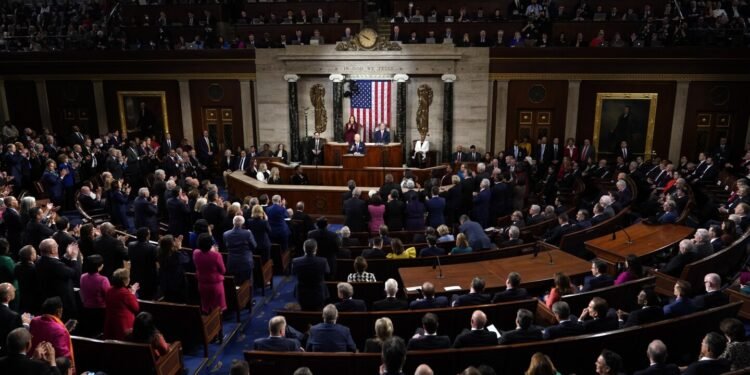WASHINGTON (news agencies) — The U.S. Constitution spells it out clearly in Article II, Section 3: The president “shall from time to time give to the Congress information of the state of the union, and recommend to their consideration such measures as he shall judge necessary and expedient.”
But the modern State of the Union address — the pageantry, the televised address and the agenda-setting message — is a far more recent tradition.
A look at some State of the Union history as President Joe Biden prepares to give his address to Congress:
George Washington on Jan. 8, 1790, in New York.
No. For his first address on Dec. 8, 1801, Thomas Jefferson sent written copies to both houses of Congress to be read by each chamber’s clerks. Jefferson wanted to simplify what he believed was an aristocratic imitation of the British monarch’s speech from the throne, which he thought ill-suited for a republic. The practice of sending written copies to Congress continued for more than a century.
Woodrow Wilson later resumed the tradition of delivering the annual message in person on April 8, 1913. He’s also credited with transforming the speech from a report on executive branch activity into a blueprint for the president’s legislative agenda for the year.
Franklin D. Roosevelt applied the constitutional phrase “State of the Union” to both the message and the event. It became the popular terminology from then on.
Calvin Coolidge delivered the first speech broadcast on radio in 1923. Harry Truman’s address in 1947 was the first broadcast on television. Lyndon B. Johnson recognized the importance of having a national audience when he moved the speech from midafternoon to 9 p.m. in 1965 to attract the largest number of TV viewers. George W. Bush’s 2002 speech was the first available as a live webcast on the White House website.



 Pakistan Rupee Exchange Rate
Pakistan Rupee Exchange Rate





